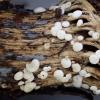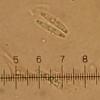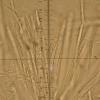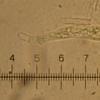
09-12-2025 12:06
 Andgelo Mombert
Andgelo Mombert
Bonjour,Je recherche l'article concernant Hypobryo

07-12-2025 16:07
Arnold BüschlenHallo, ich habe in einer Moos-Aufsammlung (epiphy

08-12-2025 21:04
Mark Stevens"Hello everyone,I'm relatively new to microscopy (

08-12-2025 18:59
 Lothar Krieglsteiner
Lothar Krieglsteiner
.. found by a seminar-participant, I do not know t

08-12-2025 17:37
 Lothar Krieglsteiner
Lothar Krieglsteiner
20.6.25, on branch of Abies infected and thickened

16-03-2014 22:00
Hello,I found this species a few months ago but ha

08-12-2025 13:39
Thomas Læssøehttps://svampe.databasen.org/observations/10572899
Phaeohelotium sp.
Yannick Mourgues,
23-10-2017 00:24
 Found at the base of dead stems of Anethum graveolens (Apiaceae).
Found at the base of dead stems of Anethum graveolens (Apiaceae).Spores 15-17,4x2,2-2,9um Q=5,5-7,1 ends rounded, some guttules inside.
Ascus IKI+, pleurorhynques, spores biserriate
Paraphyses l=2,1-2,9um with a slightly enlarged apex (l=4um).
Any idea ?
Hans-Otto Baral,
23-10-2017 06:28

Re : Phaeohelotium sp.
Hi Yannick
this is a Calycina, possibly C. subherbarum (I do not see the ascus base well). Compare also C. heterospora, which turns red with age, however.
Zotto
this is a Calycina, possibly C. subherbarum (I do not see the ascus base well). Compare also C. heterospora, which turns red with age, however.
Zotto
Yannick Mourgues,
23-10-2017 11:17
Hans-Otto Baral,
23-10-2017 11:47

Re : Phaeohelotium sp.
Yes, clearly with croziers. So I think it is C. subherbarum. Apos are perhaps over 1 mm?
Yannick Mourgues,
23-10-2017 12:40

Re : Phaeohelotium sp.
Thank's again. Apos are 1-2mm wide.
Have you got a reference of a publication for C. subherbarum or is-it a work name ?
Yannick
Have you got a reference of a publication for C. subherbarum or is-it a work name ?
Yannick
Hans-Otto Baral,
23-10-2017 12:51

Re : Phaeohelotium sp.
It is a working name. There is a valid Hymenoscyphus subherbarum which seems a Calycina too but has much smaller spores.
Zotto
Zotto




